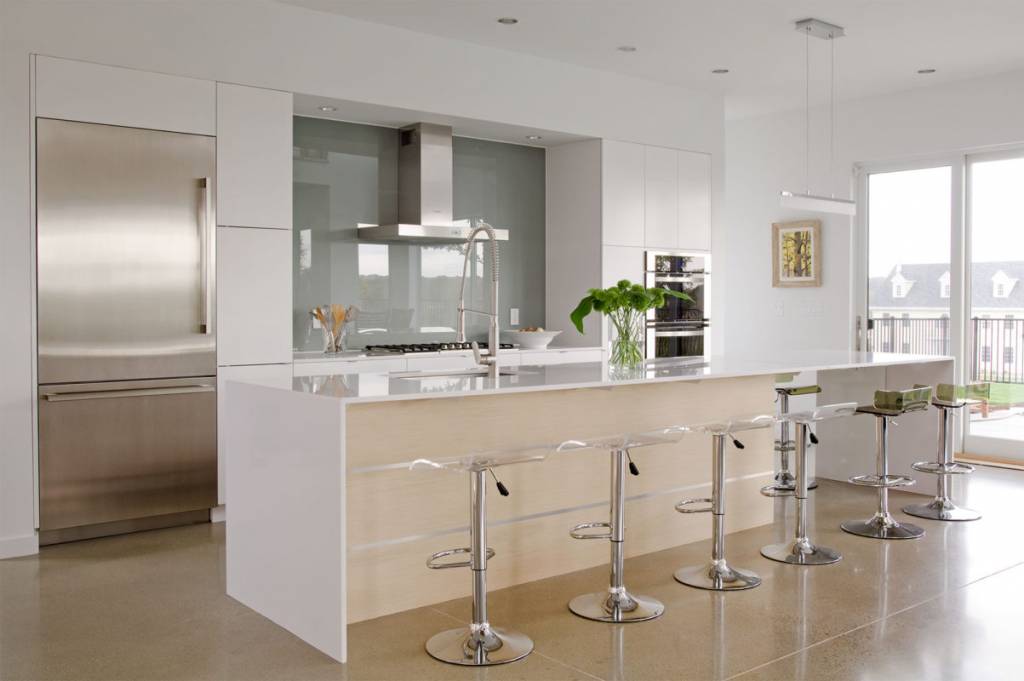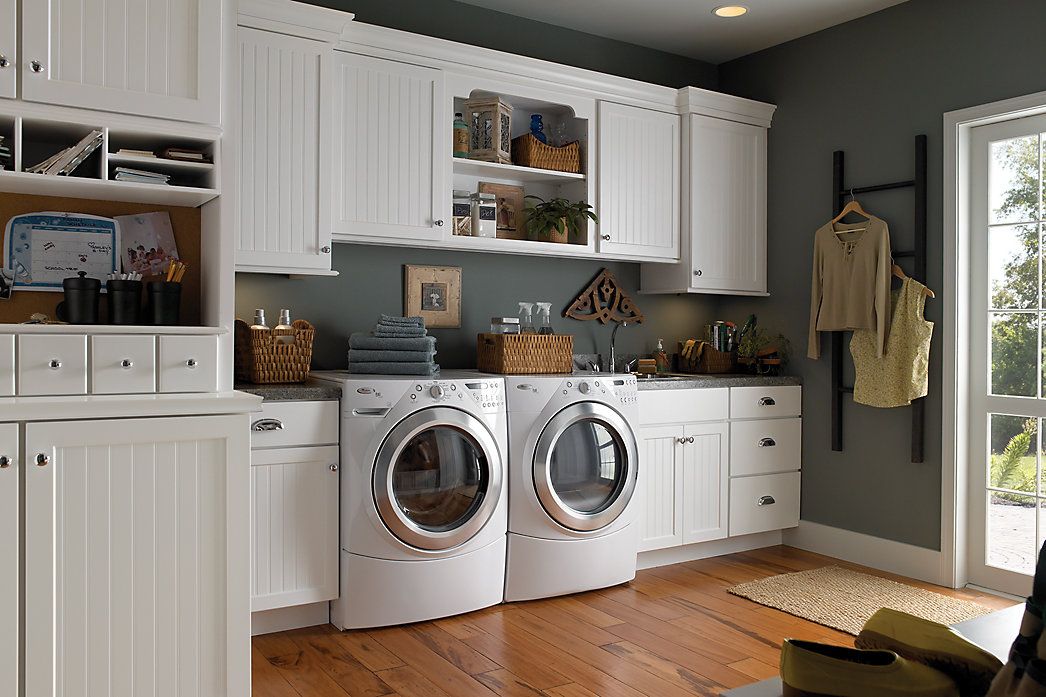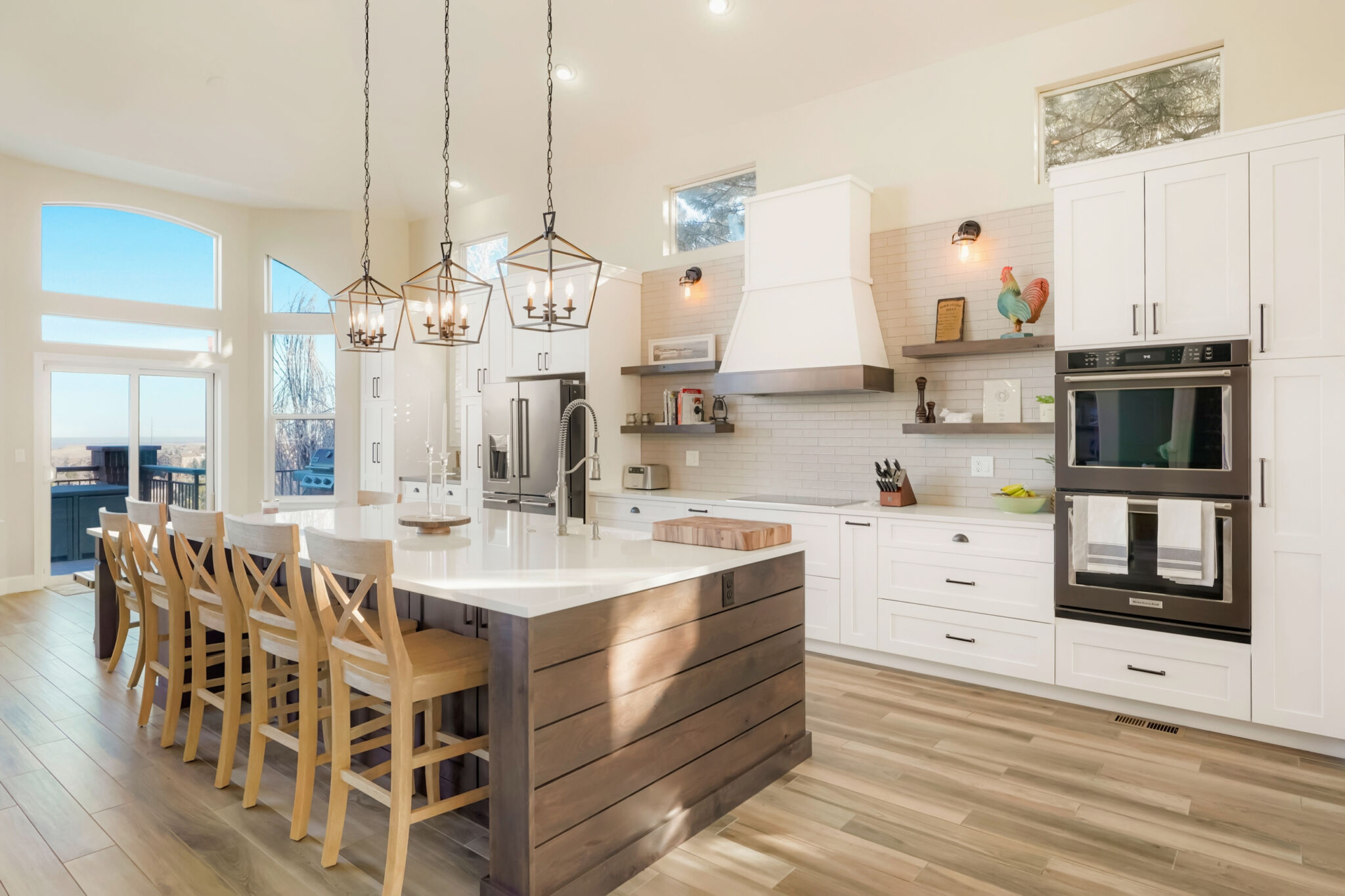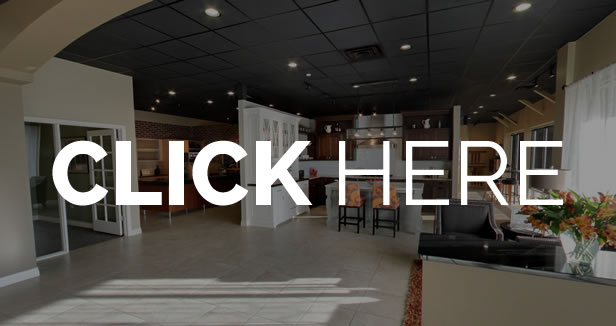You dream of a new kitchen — a fresh and inviting space that encourages connection. If you’re like many homeowners, however, you may struggle to define what, exactly, will make this space live up to your most ambitious ideals.
Alternatively, you could be bursting with ideas but may not understand how these will fit together to create a cohesive design.
The solution? Reverse-engineer your future kitchen. This targeted approach helps you identify your main goals and preferences, rather than getting bogged down with too many details.
Determine Your Must-Haves and Deal-Breakers
When you imagine the perfect kitchen, which elements come to mind? The first few features that you think of should be the priorities for your next project.
Often, cabinets and countertops are first to attract attention, although it’s also common to focus on appliances, flooring, and backsplash.
Yes, you may crave a fresh start for all of the above, but you’ll find it a lot easier to plan your project (no matter how all-encompassing) if you know which features are most important. Focus on just a few for now, and you can return to the others later.
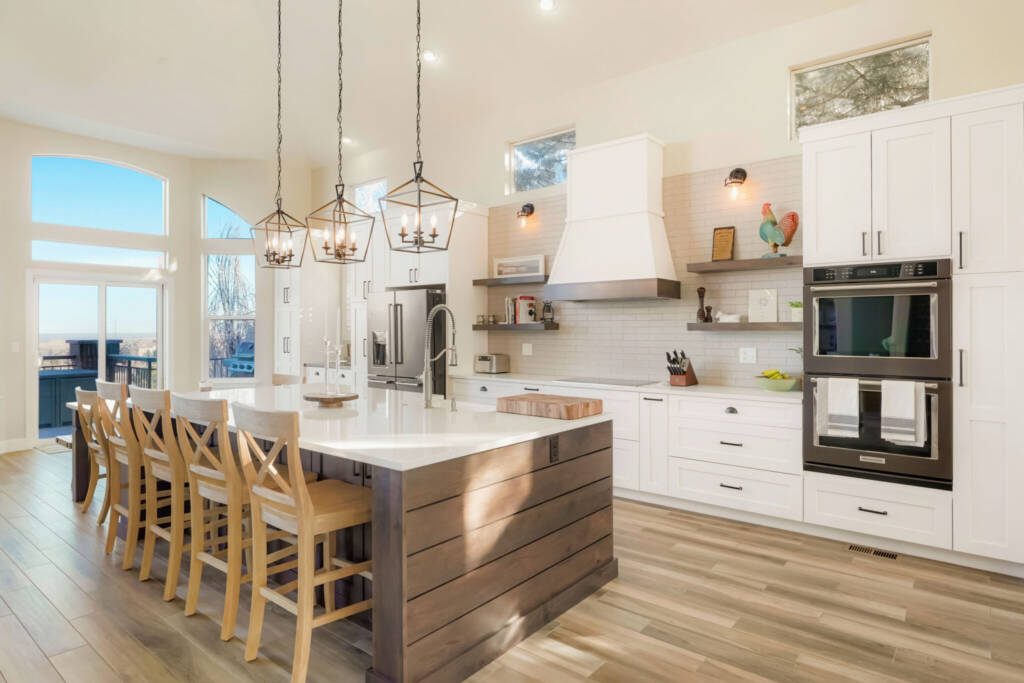
Photo | BKC Kitchen and Bath
Plan Your Layout Based on Your Priorities
Now that you understand which kitchen elements matter most, it’s time to determine how these will play into the final product.
While all kitchen features should work together to create a cohesive space, some warrant more consideration than others. As you dive into the details on how to design a kitchen layout, emphasize these key elements:
Cabinets
Cabinets play a huge role in the everyday flow of your kitchen. Strategically designed, they can reduce foot traffic while providing attractive and accessible storage for all the essentials. Aesthetically speaking, they set the tone for your entire kitchen. It’s easy to see why cabinets are the number one priority in so many kitchen remodels.
There’s a lot to consider when selecting cabinets: size, layout, materials, and finishes. When in doubt, begin with large-scale concerns that have the greatest impact on your kitchen’s functionality. Typically, this means starting with layout and cabinet size before you delve into stylistic concerns.
If your current cabinets make navigating your kitchen awkward or inconvenient, consider where and when holdups most commonly occur. Establish work zones (sometimes referred to as work triangles) that place relevant items as close as possible to key appliances. These elements must be spaced far apart enough to limit congestion — but close enough to keep your movement in the kitchen reasonable.
Next up: door style. The door is the most visual portion of the cabinet, so attention to detail is critical. The classic Shaker door is notoriously versatile, although flat doors create a wonderfully sleek aesthetic for contemporary kitchens.
Finally, consider the stylistic appeal of your cabinets. Do you want a contemporary painted design? Or do you prefer the classic look of hardwood? Lighter colors can visually expand your kitchen, but darker hues don’t show smudges as easily — and they may feel edgier or more luxurious.
Appliances
Today’s high-end appliances come in all shapes and sizes, but that’s only where the variations begin. Smart technology and advanced storage systems deliver extra convenience, while upscale finishes further accentuate an already sophisticated kitchen. Energy-efficient models abound, as do accessible designs that allow all types of people to easily navigate the kitchen environment.
First, decide which appliances you actually need. Some of these (such as refrigerators and stovetops) are no-brainers, while others are purely optional. Consider whether you’ll use dishwashers or trash compactors often enough to justify the extra cost and space. Don’t forget smaller appliances. Microwaves, for example, can be built in to save even more room.
Furniture
You’ve settled on cabinets for storing essentials and appliances for preparing your favorite meals (and cleaning up afterwards), but how and where will you gather with loved ones? Furniture selection is critical, as this can occupy a significant portion of your kitchen.
Eat-in and open kitchens often have dedicated tables, but large islands are increasingly used in lieu of traditional tables and have quickly become staples in most kitchen designs.
Chair selection is also important. Although bar stools may be sufficient for island-based seating, many people prefer chairs with arms and backs. Determine what will make you and your loved ones feel more comfortable: extra support or a streamlined style that limits visual clutter.
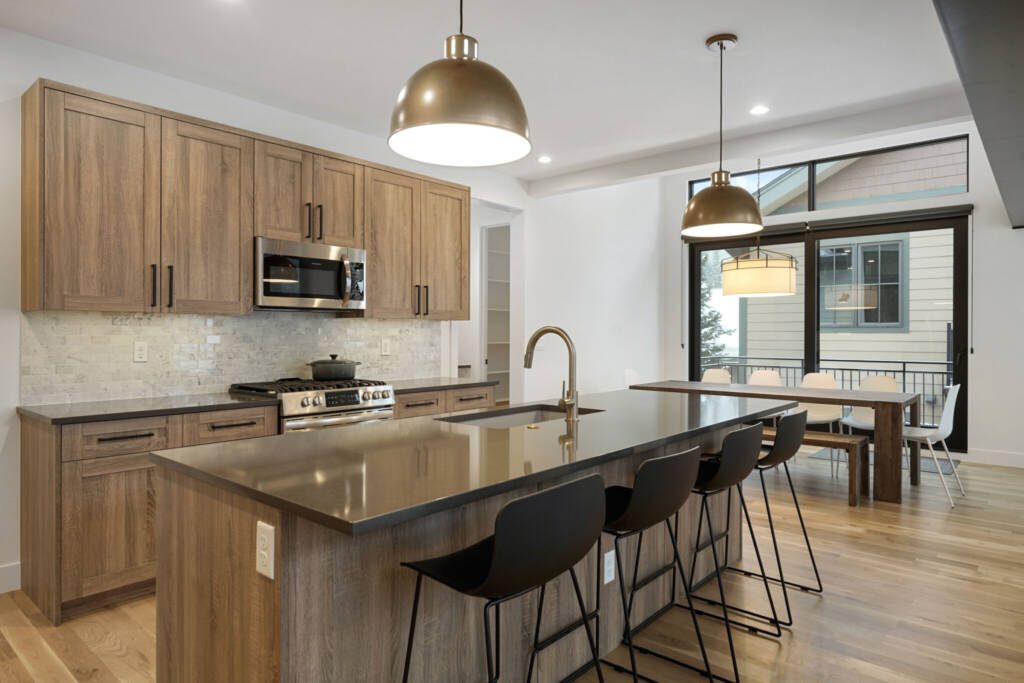
Photo | BKC Kitchen and Bath
Choose a Theme to Guide Your Finishes
With the future functionality of your kitchen established, you can take a closer look at the aesthetic elements that will make this space feel even more inviting.
If you’re like many homeowners, you already have a theme in mind. Common style descriptors include contemporary, rustic, traditional, or mid-century modern.
Once you’ve established your theme, you can make targeted decisions for the more decorative elements of your kitchen. These include:
Flooring
Eye-level features such as cabinets may capture the bulk of your attention, but flooring is just as important. Durability should be a key concern, as the kitchen is a notoriously high-traffic space. Many materials are visually appealing but likely to require extensive maintenance. Climate should also be considered; in humid areas, hardwood can be vulnerable to warping.
Other favorite options include laminate, linoleum, and porcelain or ceramic tiles. Determine which of these best fits your budget, your maintenance preferences, and the general style of your kitchen.
Countertops & Backsplashes
Countertops provide valuable surfaces for food prep, plus a major dose of sophistication if you choose the right materials. Incorporated on an island, counters deliver extra dining space. When in doubt, opt for a durable material that is easy to clean and maintain.
Granite and quartz have dominated kitchen trends for some time, but marble is a timeless and undeniably elegant option. Search for a style and material that feels cohesive with your preferred theme and other major kitchen features. This is a great opportunity to build in contrast and make your kitchen pop. For example: if you opt for dark brown cabinets, light-colored counters will stand out.
Backsplashes may feel like more of an aesthetic decision, but don’t forget that they also serve an important purpose, as indicated in their name: they protect kitchen walls from stains, oils, and other forms of damage. To make a statement, try intricate mosaics. Otherwise, subway tile is classic for a reason: it’s versatile and easy to maintain.
Hardware
Hardware is a bigger deal than you might think. Proper knobs and pulls can boost the functionality of your kitchen while also creating either a streamlined aesthetic or a sense of contrast.
First, consider sizing. There is no one size pull that works best for all kitchens, but many people prefer to follow the rule of thirds: pulls tend to be most visually appealing when they span one-third of the cabinet door’s height — and one-third a drawer’s width.
Materials and intricacy also matter. Metals are the most durable and may even have antimicrobial properties to keep your kitchen as hygienic as possible. Glass and crystal carry a lot of elegant appeal, while wood occasionally works in rustic or farmhouse locations. Weigh the value of a more distinctive look against potential drawbacks such as limited durability or difficulties with cleaning.
Lighting
Kitchen lighting serves many functions in your renovated kitchen. It can draw attention to your favorite features while also cultivating a welcoming ambiance. Meanwhile, task lighting is essential for food prep. Use statement lights such as pendants to emphasize your theme, along with under-cabinet lighting or other subtle additions to make everyday tasks a bit easier.
Your End Goal Is the Surest Way to the Kitchen of Your Dreams
Do you have big plans for your dream kitchen? Our team at BKC can help you establish and refine your vision.
Look to our guide on the 6 Steps to a Successful Remodel for further insight. We’d love to discuss your plans, so don’t hesitate to get in touch!


